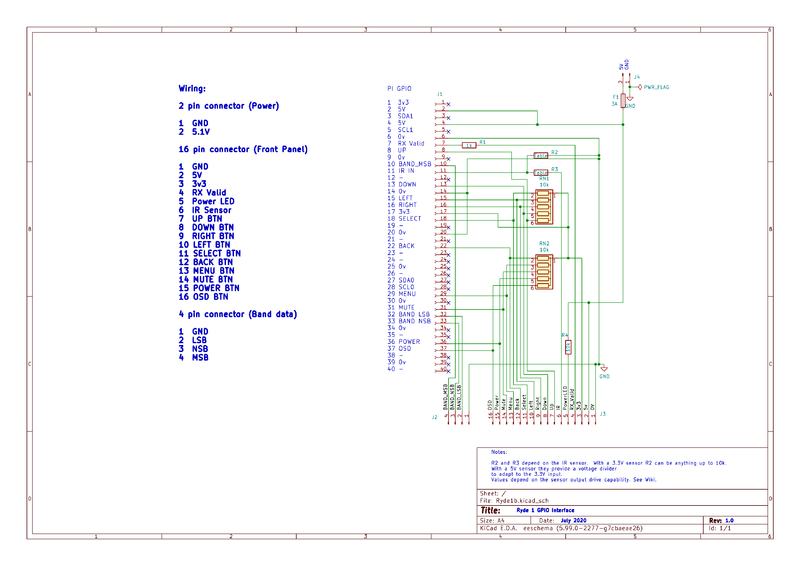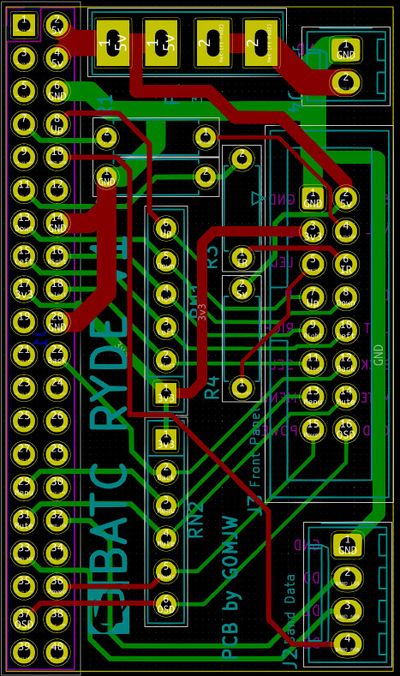Ryde GPIO breakout
To help constructors connect easily to the Ryde RPIO, BATC has produced a small daughter board - PCBs will be available in the BATC shop.
Construction notes
- Note the GPIO board requires 5v NOT 12v!
- The GPIO header is placed on the opposite side of the PCB to the rest of the components.
- Pay attention to the orientation of the resistor arrays - they are not the same.
- Build the top side first, start with the resistors, then the resistor arrays, then the 16 way, then the headers, finally fit the 40 way on the other side of the PCB.
- The fuse is a standard automotive mini-blade, 3A. Take care inserting it as it requires considerable force. You may need to open up the socket a little.
Schematic and bill of materials
Nothing is really critical here so don't worry about 47k vs 10k vs 22k resistor arrays. What does matter is the IR sensor does not put more than 3.3V into the GPIO as the PI is not 5V tolerant. Therefore either use a 3.3V sensor as recommended, or if you insist on re-using that old sensor recovered from a set top box make a resistor divider using appropriate values for R1 and R2.
Farnell part numbers: Other suppliers are available.
IR Sensor - TSOP2438 Farnell code 4913097 Run off 3.3V R1 4k7, omit R2.
For 5V sensors possibly set R1 4k7, R2 10k, but this may not work for all sensors. (Hint - Just use the recommended sensor, run it off 3.3V)
SIP Resistor arrays 10k 4606X-101-103LF Farnell code 9356142
Resistors e.g. 1K, 4k7, 10K Multicomp MF12 or MF25 series.
10k Farnell code 9342419
1k Farnell code 9342400
4k7 Farnell code 9343253
Connectors:
2 way Molex kk254 6373 series Farnell code 1462926
4 way Molex kk254 6373 series Farnell code 1462920
16 way socket Farnell code 1106834 or 2310066
40 way socket Farnell code 2308433
Fuse holder:
MCCQ-122 Farnell code 1586595
Alternative RS Parts:
Resistor arrays – 522-3488 (Packs of 25)
IR Sensor 180-8012 (Packs of 10)
Button switch 686-6970 (Two off pack of 5)
RS do not appear to do the fuse holder.
Alternative Digikey Parts:
TBC


